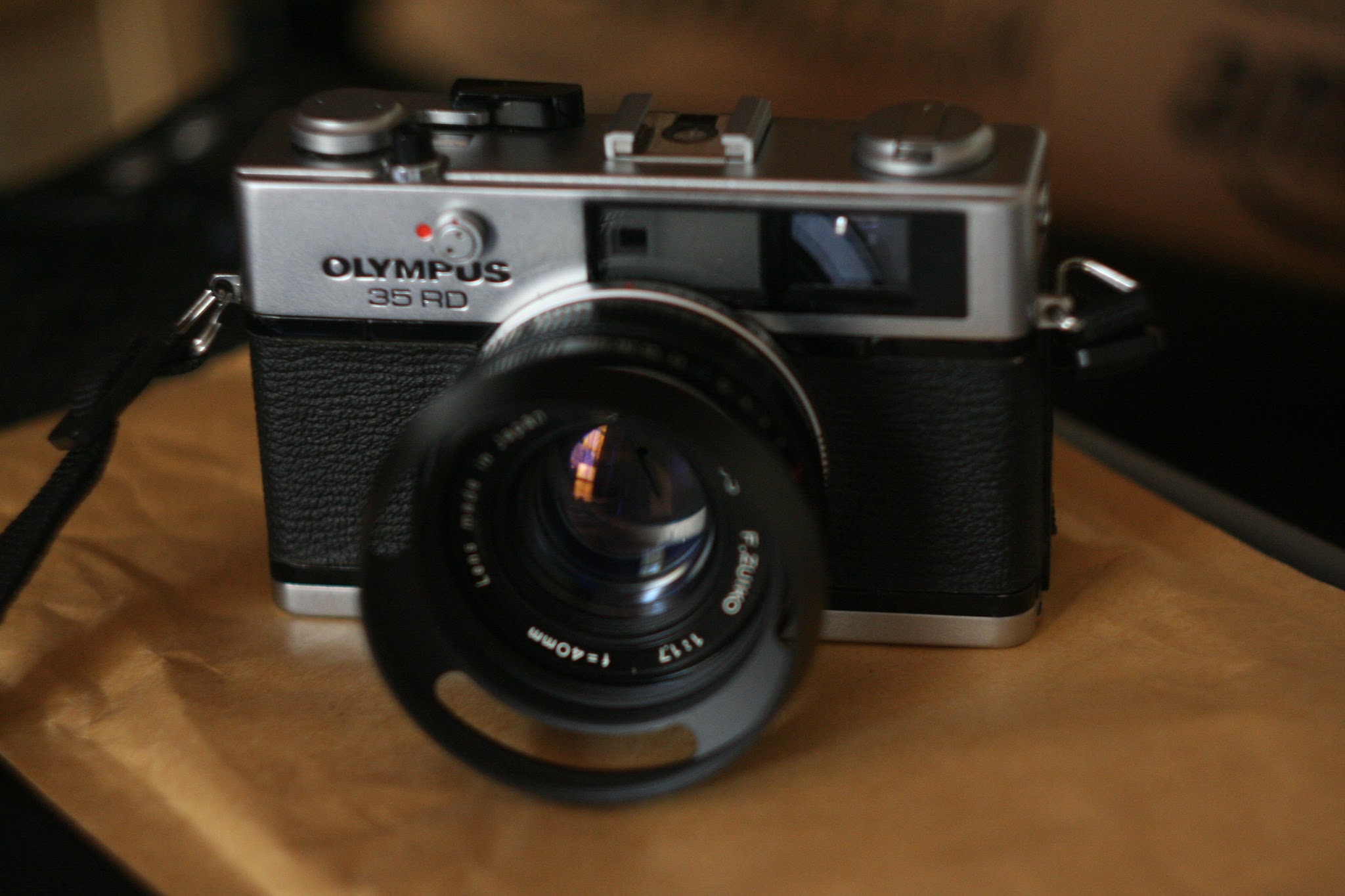olympus trip 35
It took long enough, but I finally got to try out the famous Olympus Trip 35. Having used the Olympus 35 RC, RD and SP, the Trip felt both familiar and strange at first. Familiar because of the form factor and size of the camera - it felt just like the RC in the hand. It has the classic metal and black 1970's compact camera/rangefinder design. The 40mm f2.8 lens also sits somewhere between the RC and RD range. That's about it.
I took the Trip on a, er, trip to picturesque Eastbourne sometime this summer to test it out. The first thing I missed was the rangefinder - there is none. Instead, it is a zone-focus camera with icons to guide you, or actual distances if you know what you're doing. I used the icons.
I had problems nailing focus at first, especially just after shooting something closer up, and then forgetting to adjust the focus for something far away. Yes the camera is fully auto, but it is NOT focus-free. I often forgot that and treated it like a focus-free plastic point and shoot.
The second thing I missed while using the Olympus Trip, compared with its RC/RD/SP siblings, is the exposure information in the viewfinder. The Trip completely lacks this - except for the parallax guide. I had no way of telling the camera was choosing the correct exposure each time I pressed the shutter.
I was also a little worried about the selenium cell powered exposure meter. These things get old [decay] and sometimes don't function as intended. You can imaging my joy then when the photos came out, and there was anything exposed at all. In fact, not only were there photos exposed unto the film by the Trip, they were exposed very well indeed. To the Trip's credit, I can't tell the photos apart from those produced with my Olympus 35 RC!
Having said that, just like any camera's, the Trip's light meter can be fooled by tricky light conditions. At least with the cameras capable of manual control one can compensate accordingly. With the Trip, you point, focus, shoot and hope for the best. I'm sure there are people out there who find their way around this by messing with the ISO settings to compensate, but that's a little risky. For all I know, the camera may have even selected the correct exposure to start with.
All in all, I think Olympus did really well with this camera. It's near perfect for a sunny beach holiday trip. It's solar powered, so it needs no batteries for ever. It's automatic, so you don't have to worry (much) about the exposure. Zone focusing may even be better on holiday because, to be fair, most of the photos will be of the sea, sand, architecture and groups of people.
I enjoyed using this camera. It wont replace my RC as the pop-in-the-bag holiday camera (I love the full manual controls too much), but I can highly recommend it. Especially if you can find a properly working one.













Comments
Post a Comment